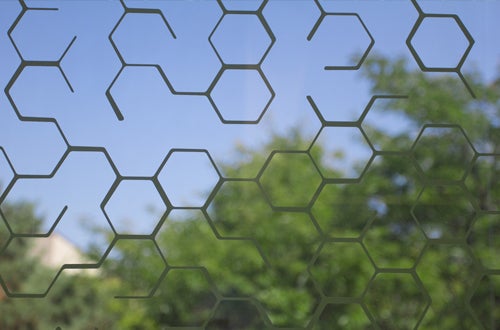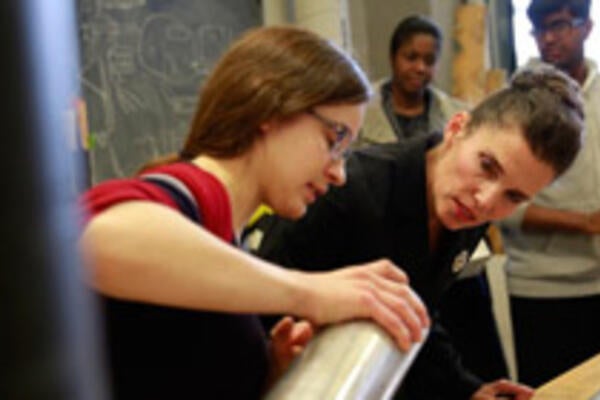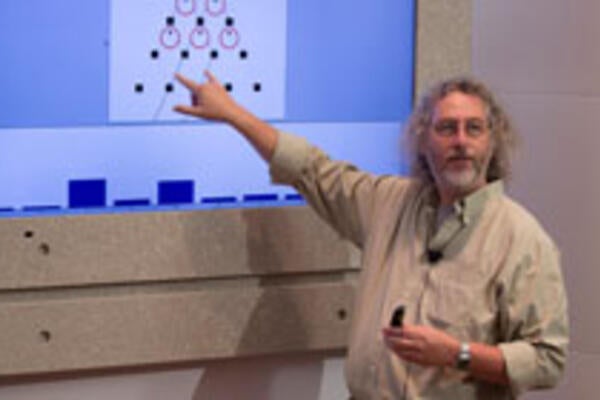
Nanotech experts hope to take detailed pictures of molecules
Waterloo hosts NanoMRI Conference where top researchers share ideas about MRIs that would produce 3D scans at the molecular level

Waterloo hosts NanoMRI Conference where top researchers share ideas about MRIs that would produce 3D scans at the molecular level
By Christian Aagaard Marketing and Strategic Communications
Physicist Raffi Budakian understands the furious excitement about Pluto these days.
In one close swoop earlier this month, NASA’s New Horizons spacecraft revealed new things about the dwarf planet. Scientists scurried off to rewrite the Pluto story that had been based on observations from distant Earth since 1930.
Budakian, a physics and astronomy professor at the University of Waterloo, hopes nano magnetic resonance imaging (nanoMRI) can do for the exploration of quantum space what New Horizons has done for our understanding of outer space: answer a lot of questions and raise a few more.
“The most powerful telescopes from terrestrial sources couldn’t see the kind of detail and structures there are on Pluto until we actually got up physically close and started taking those pictures,” says Budakian, also a professor in Waterloo’s Institute for Quantum Computing (IQC) who holds a joint nanotechnology endowed chair in Superconductivity with IQC and the Waterloo Institute for Nanotechnology (WIN).
“That’s really our goal, too: to look at nature in a fundamentally new way... and see what we can find.”
Not your average MRI
Budakian is organizing the 2015 NanoMRI Conference, a five-day conference being held this week at the Institute for Quantum Computing. The field is so new that this is only the fifth NanoMRI Conference, and the first at the University of Waterloo.
Doctors have used magnetic resonance imaging for more than 30 years to diagnose a range of health problems, from cancer to knee injuries. Since the body is mostly water, and water is mostly hydrogen, magnetic resonance scanning produces remarkably detailed images as hydrogen atoms shift from aligned to relaxed states under bursts of certain radio frequencies.
But that’s the massively big picture.
Budakian and his colleagues work at an entirely different level — the nano scale — where atoms form molecules in the quantum realm. Squint at a millimetre on a ruler and try to grasp that it is a million times larger than a nanometer.
The electromagnetic properties of single molecules, or small groups of molecules, are too weak to be picked up by conventional means.
So researchers, such as the ones gathering for the NanoMRI Conference, want to develop technology that causes the molecular world to reveal itself in far greater detail. Three-dimensional scans at the molecular level, for example, would dramatically broaden what’s known about viruses and proteins, possibly changing the way medicine manages disease.
Faster computers, smarter sensors
“To have that kind of information would be transformative,” Budakian says.
Research into nanoMRI isn’t limited to nano-scale microscopy. Budakian says it has applications in the progress of super-fast quantum computing, and the development of acutely sensitive sensors.
Injected into the body, nano-sized, diamond-based sensors could tune into malfunctioning cells. Applied to materials, they could measure stress before things break.
The NanoMRI conference brings together scientists from different areas of nano-scale research to collaborate. More than 100 participants are expected this year, more than half of them students. The schedule includes 30 speakers.
Speaking sessions fill the mornings and evenings, leaving afternoons open for participants to meet and share ideas.
“It’s meant to give people time to digest what they’ve heard, to talk to people about what they do,” Budakian said “We have high-quality talks and a lot of open space to interact. That’s where the impact of the conference is.”

Read more
President Kolinda Grabar-Kitarović will tour the Institute for Quantum Computing

Read more
Minister meets students in the Institute for Quantum Computing, Velocity Science program and the Sedra Student Design Centre

Read more
Waterloo researcher David Cory shares three rules for building a quantum computer
The University of Waterloo acknowledges that much of our work takes place on the traditional territory of the Neutral, Anishinaabeg and Haudenosaunee peoples. Our main campus is situated on the Haldimand Tract, the land granted to the Six Nations that includes six miles on each side of the Grand River. Our active work toward reconciliation takes place across our campuses through research, learning, teaching, and community building, and is co-ordinated within the Office of Indigenous Relations.